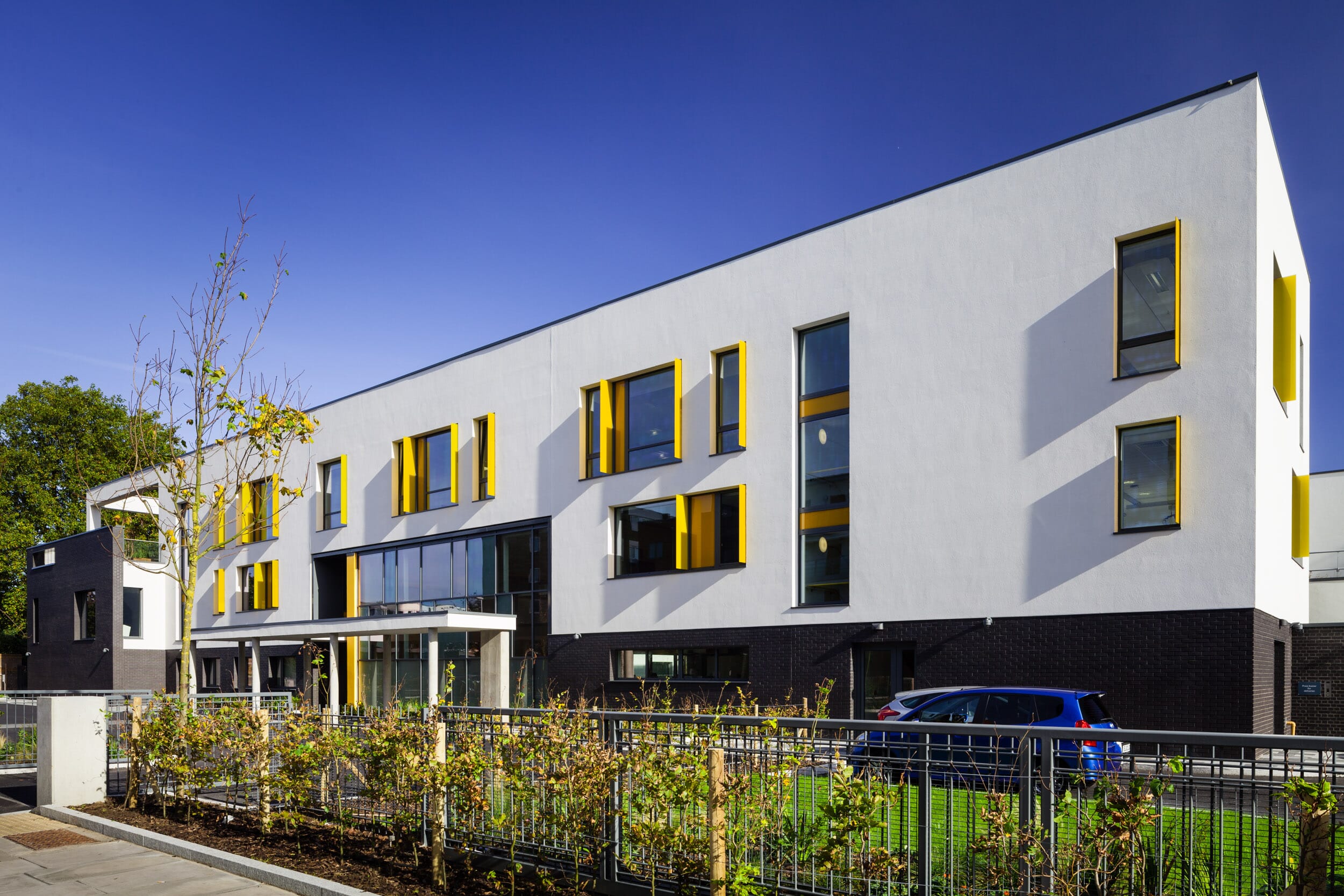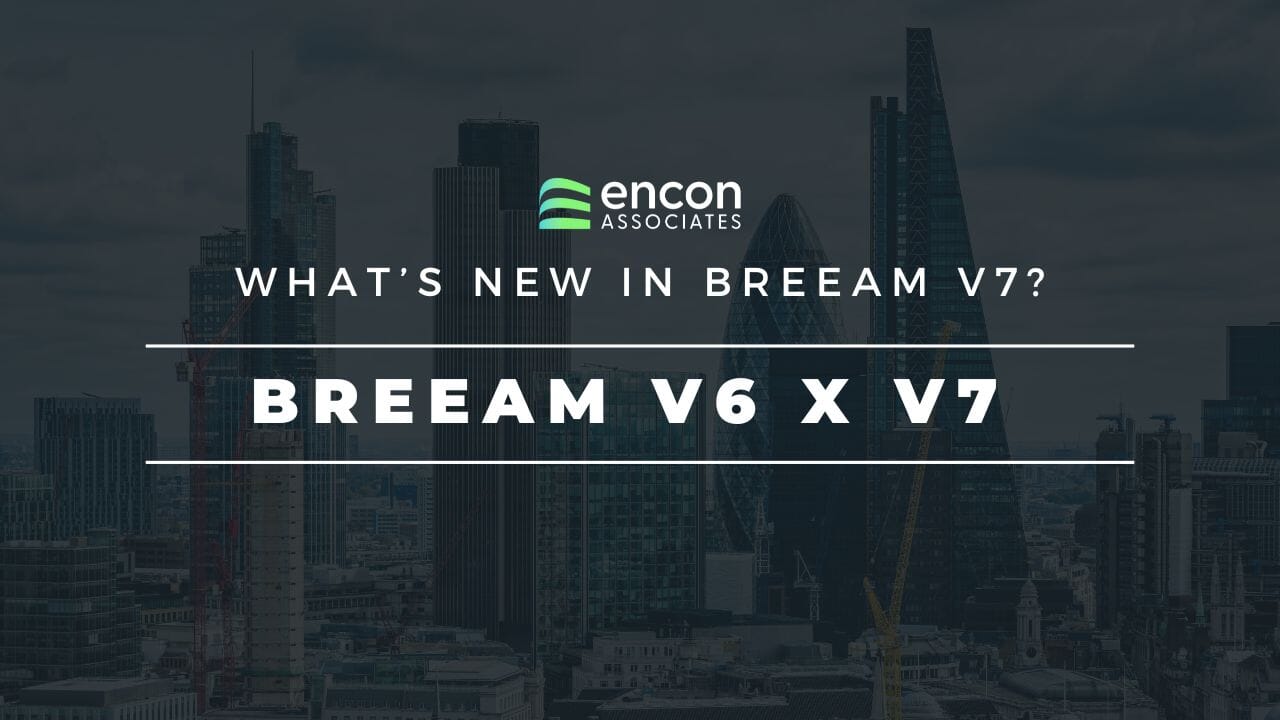Exploring the key changes between BREEAM v6 and BREEAM v7
As of July 2025, BREEAM v7 has finally arrived. It’s been some time since the release of BREEAM v6 in 2022, and significant changes are now on the horizon. With every new iteration, BRE continues to refine the assessment criteria – making the process even more rigorous to drive the delivery of built assets that are environmentally responsible in both construction and operation.


BREEAM v7 marks a pivotal shift in the framework, placing a stronger emphasis on carbon reduction and energy efficiency. This new methodology promotes strategies that reduce embodied and operational carbon, while maintaining high performance standards throughout the building’s lifecycle.
In today’s blog, we explore the key changes between BREEAM v6 and BREEAM v7, and explain how we can help you navigate this new framework with confidence.
BREEAM v6 vs v7: What’s changed?
1) Life Cycle Assessment (LCA) and Whole Life Carbon
The criteria for Mat 01 has been completely rewritten in the latest BREEAM version. Life Cycle Assessments (LCA) and embodied carbon reporting are encouraged for all projects, and they are now a minimum requirement for those targeting Excellent or Outstanding ratings. These assessments must be completed during the conceptual design, technical, and post-construction stages, with credits awarded independently at each phase. New benchmark comparisons have also been introduced to reflect carbon performance across different building types, reinforcing the shift towards Whole Life Carbon analysis.
At Encon Associates, we offer comprehensive Whole Life Carbon and Life Cycle Assessments to help you comply with these new guidelines and unlock maximum RIBA credits. Please get in touch for further information.
2) New Energy credit structure
The Energy category in BREEAM v7 has been completely restructured to reflect the evolving demands of energy performance and climate resilience. What was previously grouped under broader categories in v6 has now been separated into eight distinct issues (Ene 01 – Ene 08), with each targeting a specific aspect of building energy performance.
The most notable updates are:
- Ene 01 – now focuses solely on regulated energy and carbon performance, introducing flexible metric weightings and alignment with EU Taxonomy.
- Ene 02 – replaces parts of the old ENE 01 and introduces operational energy prediction benchmarks, with credits for verified modelling and comparisons to targets.
- Ene 04 – introduces a formalised process for passive design strategies, splitting the credit between building form optimisation and fabric performance.
- Ene 07 – expands the previous demand-side response credit to all fixed building systems, offering more granularity based on system capability.
- Ene 08 – a new issue that rewards detailed HVAC and service system controls that respond to energy demand more efficiently.

3) Refreshed Health & Wellbeing category
BREEAM v7 has also significantly restructured the Health & Wellbeing section. New assessment issues have been introduced and the criteria has been refined to provide clearer guidance for projects targeting higher ratings.
Key changes include:
- Hea 01 – introduces new/updated daylight benchmarks such as direct sunlight, glare control, and view-out.
- Hea 02 – the credit for internal and external lighting has been restructured into criteria including zoning, flicker control, and colour-tuning..
- Hea 03 – a brand-new credit that supports non-visual effects of lighting.
- Hea 04 – an Indoor Air Quality Plan is now worth one credit and is required as a minimum standard for projects targeting Very Good ratings and above.
4) Ecology, refrigerants, and pollution
The latest BREEAM version brings more demanding requirements for ecology and pollution and ensures your building is fully aligned with UK biodiversity laws, EU Taxonomy, and international best practice.
Core updates include:
- Refrigerants – all refrigerants used in buildings must now demonstrate zero ozone depletion potential (ODP) as a pre-requisite to award credits for Pol 01.
- Land use and ecology – BREEAM v7 now requires buildings to complete ecological assessments that are aligned with ISO 18400 and UK biodiversity legislation.
- Ecological enhancements – projects can now earn Biodiversity Net Gain (BNG) credits through the use of approved biodiversity tools or by applying the Urban Greening Factor.

5) Updated minimum standards
BREEAM v7 has introduced several new minimum standards that your project must meet to achieve higher ratings.
These include:
- Mat 01 – To achieve an Excellent rating, you must complete a Life Cycle Assessment at any one project stage. For Outstanding, you must complete a LCA for all three stages (concept, technical, and post-construction), along with embodied carbon reporting.
- Ene 01/Ene 02 – If you’re aiming for an Outstanding rating, you must demonstrate that you have taken steps to eliminate on-site fossil fuel combustion. For an Excellent score, you must meet the minimum energy standards via either Ene 01 or Ene 02.
- Hea 01 – You must meet this new daylighting standard to achieve an Outstanding rating. This includes metrics for daylight access, glare control, and view out.
- Hea 04 – You must complete an Indoor Air Quality Plan as a mandatory requirement to achieve a Very Good rating or higher.
6) Revised rating boundaries
BRE has updated the rating thresholds to promote consistency across the different lifecycle stages.
The new rating boundaries are:
- Pass – Reduced from 30% to 25%
- Good – Reduced from 45% to 40%
- Excellent and Outstanding thresholds remain the same
7) Rebalanced weighting system
BREEAM v7 introduces new category weightings that have been specifically tailored to align with local environmental policies and construction practices, while also supporting global sustainability goals.
These include:
- Increased emphasis on the Materials category, with higher weighting assigned to address embodied carbon and Whole Life Carbon performance.
- Health and Wellbeing still retains its importance, encouraging buildings to adopt positive daylight, thermal comfort, and air quality enhancements.
- Energy weightings are now more closely aligned with the decarbonisation of electricity grids, reflecting the move away from fossil fuels toward full electrification of buildings.
You can read more about the changes via the official BRE website.
Need help preparing for the latest BREEAM version?
BREEAM v7 builds on the strengths of its predecessor, offering a more progressive and ambitious pathway to delivering environmentally resilient buildings. Engaging with an expert BREEAM Assessor, like Encon Associates, in the early stages is the key to achieving the maximum score possible. From providing early-stage advice through to submitting your final assessment to the BRE, we can help you navigate the latest BREEAM version, ensuring that your project performs strongly against the updated criteria.
Get in touch to discuss your BREEAM requirements.
